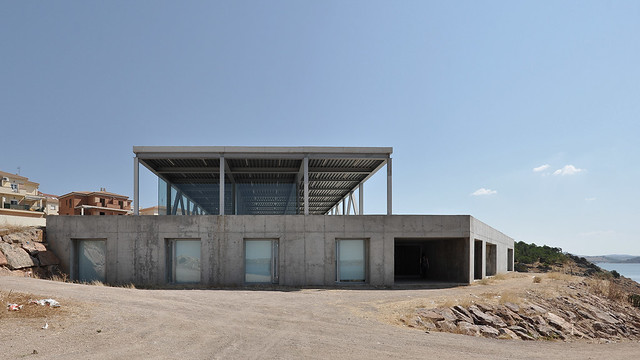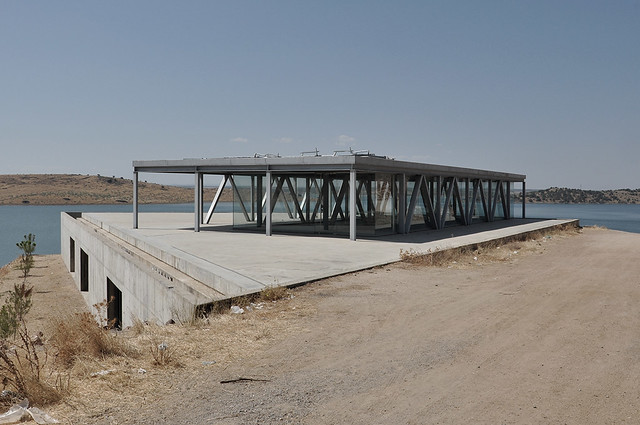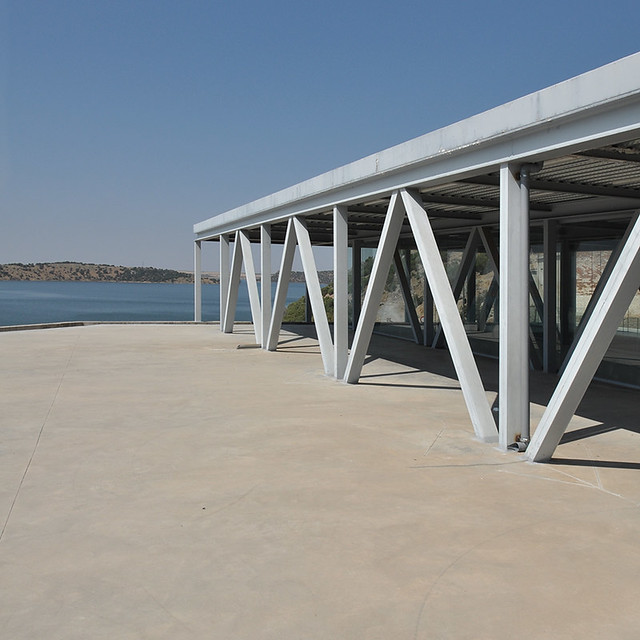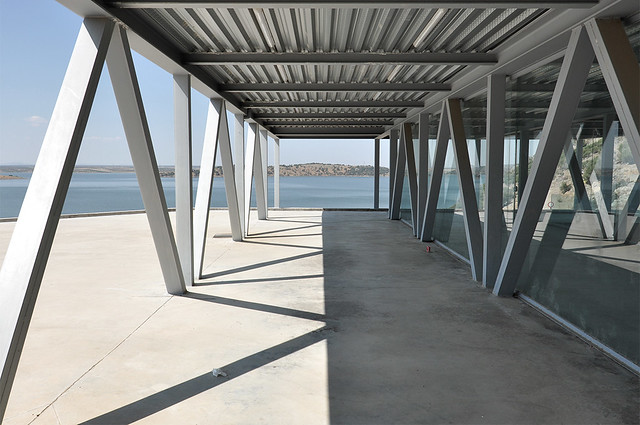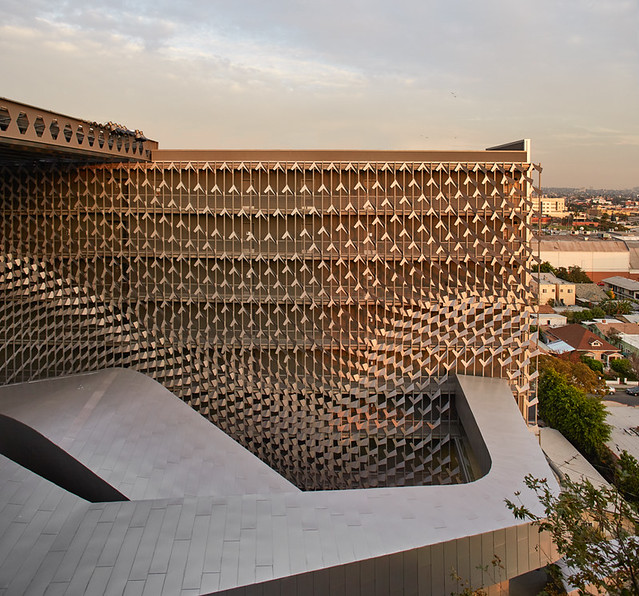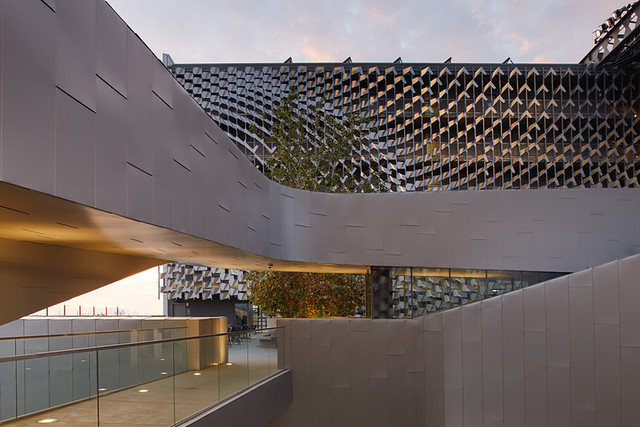
[All photographs courtesy of Michael Sorkin Studio]
If I had a nickel for every time I've read somebody comment in response to one of Michael Sorkin's opinion pieces something like, "What does he know? He hasn't built anything," I'd probably have, well, a dollar and some change. To me that point does not hold relevance for criticism and for being influential in the world of architecture; ideas take precedent over experience, or at least over a particular type of experience, since it comes in all shapes and sizes, not just from realizing a building from beginning to end. Nevertheless, these comments spring to mind as I look at construction photographs of Michael Sorkin Studio's Xi'an Office Building going up near the Xi'an Xianyang International Airport in China. Sorkin's detractors probably won't be satiated by this revelation, but I don't care; I'm just glad to see a creation of his come to life, even if it's halfway around the world from his New York City home.

[Project aerial rendering]

[Context view | Aerial from Google Maps]
The office building is made up of two pieces – a round building and a rectangular bar – and is intended to mark the entry to a new district just north and west of the airport. Construction of the project is visible in the Google Maps aerial, but not much else has accompanied it. So what kind of "new city" context the building will fit into remains to be seen, especially since, like most renderings of projects in China, it is depicted above in a generic landscape of roads, grass and trees. Like many buildings in China designed by architects from overseas, the project creates the landscape, rather than the other way around. In the case of the Xi'an Office Building, it's the round building that makes the strongest statement.

[Close-up of site | Aerial from Google Maps]

[General view from rectangular bar toward round building]
Although the cladding that is still to come will greatly influence the final building's appearance, the rendering above indicates that the arching structure will be left exposed. So these recent construction photos give a good sense of what is to come. Particularly striking is the way the the concrete arches span from the exterior to the courtyard, eschewing vertical exterior walls and giving the impression of a vortex in the middle of the building.

[A closer view from the rectangular building]

[Looking south from the courtyard]
The form harks back to traditional Chinese Tulou dwellings while also recalling contemporary buildings like Herzog & de Meuron's "Bird's Nest" stadium for the 2008 Olympics in Beijing. The sloping section of the building, evident in the photo at top, means that more sunlight reaches the courtyard and the spaces that overlook it. It also means the building looks best from the south, where it reveals the central courtyard for those approaching from the airport via car, and for those walking on the central axis from the rectangular building.

[Courtyard detail]

[Michael Sorkin on the job site]
Sorkin Studio's website shows another project in Xi'an, a mixed-use complex that would sit directly west of the office building, just across the busy north-south road. It's not clear if work has proceeded on this project with exhibition and convention hall, offices, a hotel, and a large shopping mall, but here's hoping Sorkin has some momentum in Xi'an and will get to keep building.
